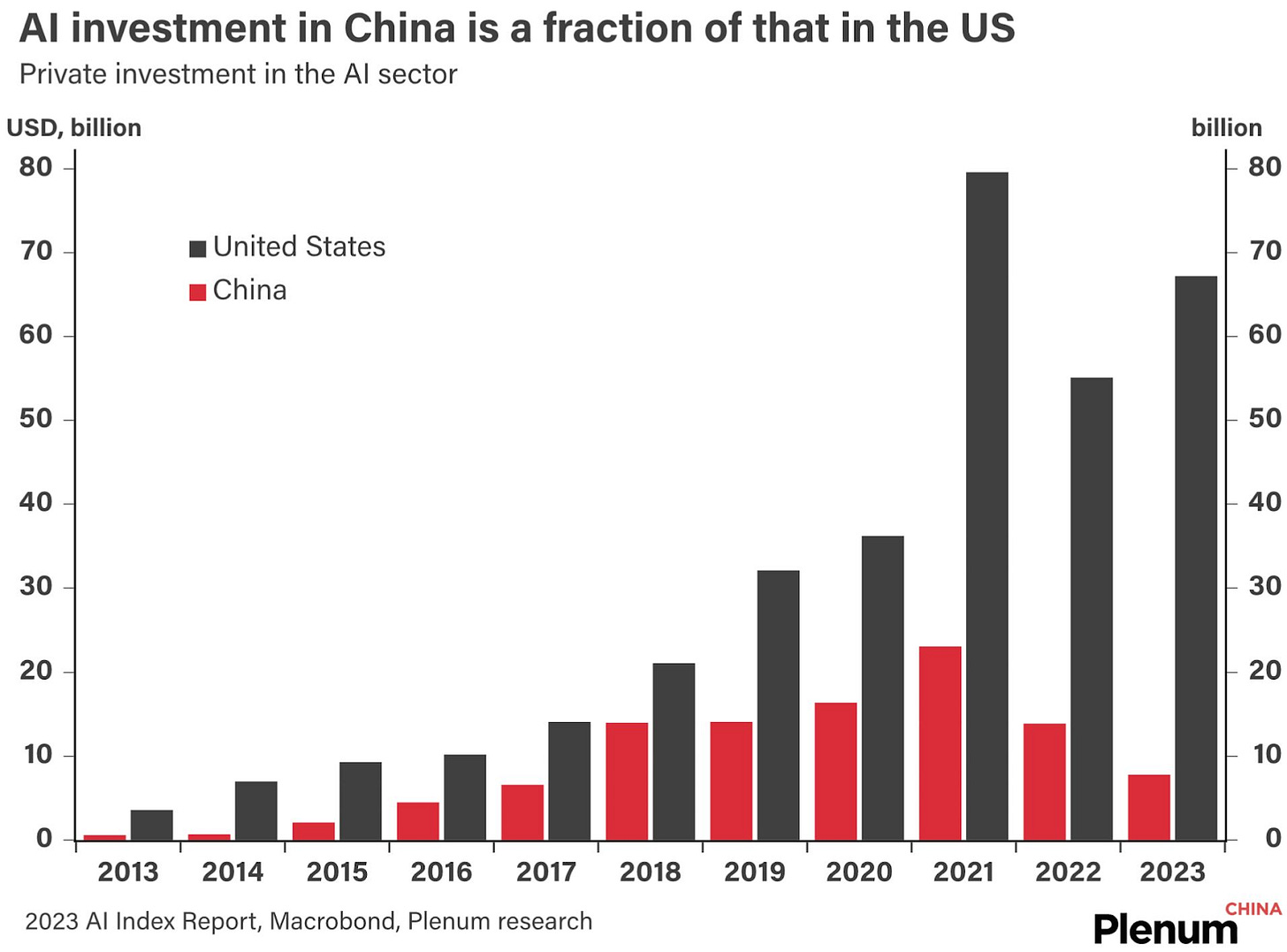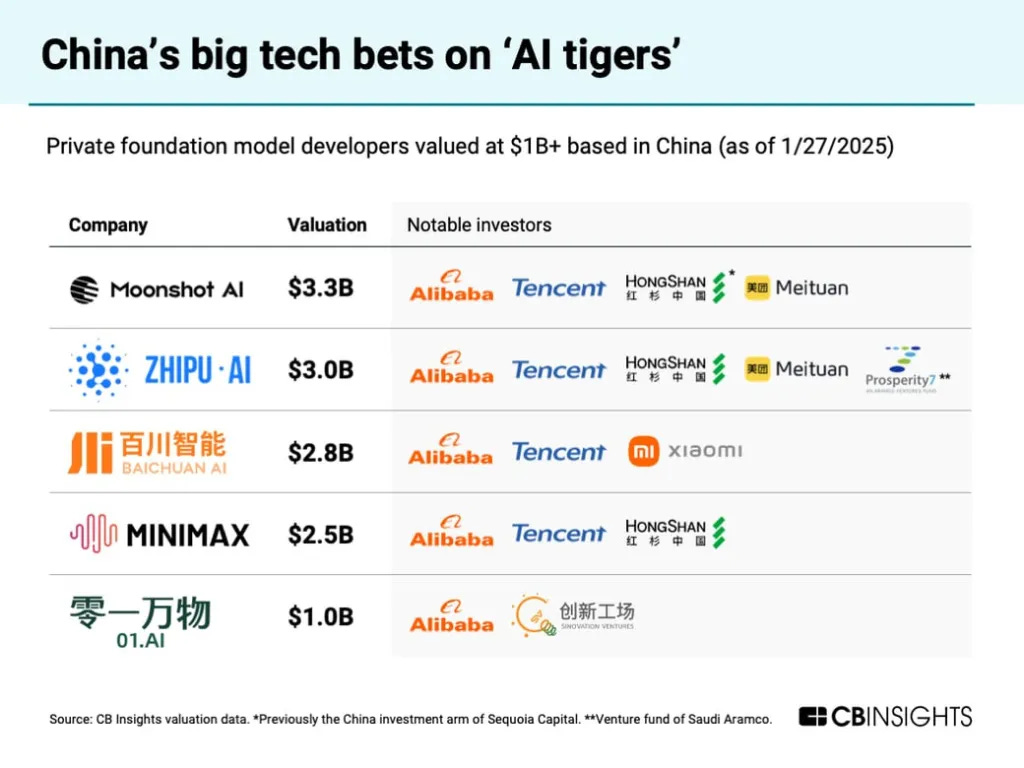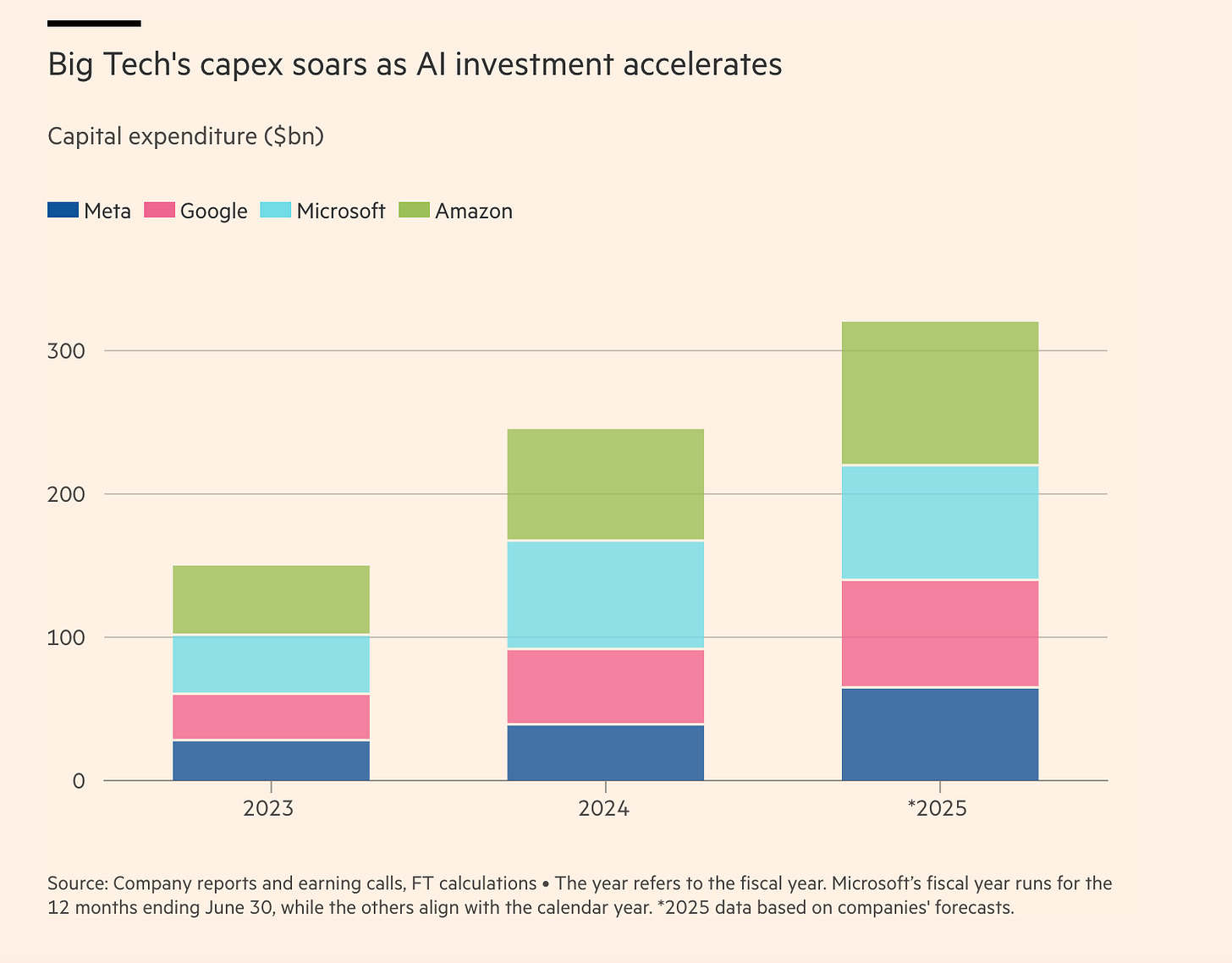An anon asks the question: Is China racing to develop AGI?
U.S. leaders increasingly frame artificial intelligence as a future-defining competition. Secretary of the Interior Doug Burgum warns of an “AI arms race,” while calls for a “Manhattan Project for AI” grow louder. Corporate giants echo this urgency: OpenAI claims China is “determined to overtake us by 2030,” while Anthropic’s Dario Amodei dreams of a US-led unipolar world — only if America speeds up and beats China to AGI.
But this entire “race” narrative hinges on a crucial assumption: that China is sprinting toward AGI as well.1 Is it?
This piece, inspired by Dwarkesh’s AI scaling essay, stages a Platonic debate between two voices:
The Believer, who insists China is racing to beat the US to AGI
The Skeptic, who doubts China’s focus and urgency
They clash over several key questions: Are Chinese policymakers truly committed to AGI? Do China’s top AI labs see it as feasible and imminent? Are investors pouring serious money into AGI projects? And does DeepSeek mark an inflection point?
Are policymakers AGI-pilled?
Believer:
China’s senior leadership has been all-in on AI for at least a decade. They launched their “big funds” for semiconductors in 2014. In 2017, the State Council set a clear goal: making China the world’s primary AI innovation centre by 2030. A year later, Xi Jinping himself called AI a game-changer, with a "profound impact on economic development, social progress, and the international political and economic landscape." That’s five years before ChatGPT dropped.
Skeptic:
Sure, they’re all in on AI, but that’s not the same as racing toward AGI. Back then, Beijing prioritized facial recognition, surveillance tech, autonomous driving, and industrial automation — narrow, specialized applications. They didn’t exactly throw their chips in the “AGI” basket, spending only $300m USD on their hyped up “AI megaproject”, which ended up just being a mechanism for funding dozens of small research projects, not some giant cluster.
Believer:
Alright, so you’re saying China is into AI but not AGI. But after ChatGPT in spring 2023, the Politburo explicitly stressed "development of artificial general intelligence" and the importance of building an "innovation ecosystem" around it. That’s a shift toward serious long-term AGI ambitions.
Skeptic:
Yes, that was the first time the Chinese top leaders used the term “AGI”, and that should make us think. But the Chinese term here, “通用人工智能,” doesn’t necessarily translate to “AGI” in the sense of “superintelligence” — it can also mean something more mundane like “general-purpose AI.” This was also a few months after ChatGPT exploded onto the scene, so they may have mostly been just thinking of LLMs at the time.
Believer:
But AGI was just about all anyone was talking about then! Even if the term has two meanings, certainly they would have discussed the idea of AI with human-level intelligence if they were bringing up this kind of term in such a major meeting.
Skeptic:
But here’s where it gets interesting. In China’s political system, a big policy announcement like this one gets followed up by clarifications in party-state media. And guess what? A couple of months later, a People’s Daily op-ed directly referenced the Politburo meeting and explained the difference between "specialized AI" and "general-purpose AI" (通用人工智能). This wasn’t about AI that could outthink humans, but more about systems that can do multiple tasks. The article even said general-purpose AI is still in its "early stages". Nobody in Zhongnanhai is feeling the AGI.
Believer:
That was almost two years ago! In February 2025, Gao Wen — head of Pengcheng Lab and the guy who once briefed Xi Jinping on AI — wrote in People’s Daily that we are in a “transitional phase from weak AI to strong AI”, adding that AI is the “strategic commanding height in great power competition”. If that’s not AGI race rhetoric, what is?
Skeptic:
We can also look at how the wider bureaucracy interpreted the Politburo message on AGI. The Ministry of Industry and Information Technology (MIIT) included “AGI” as a focus area in a new funding round. The projects they describe are aiming to set up data centers with just 1,024 GPUs by 2025. That is a rounding error next to U.S. clusters. The MIIT lumped “AGI” with the Metaverse, humanoid robots, and brain-computer interfaces. Yes, the Metaverse.
Believer:
But local governments are jumping in too — Beijing, Anhui, and Guangdong have all announced AGI initiatives, pooling compute and data resources for large model research. They’re discussing roadmaps that go beyond LLMs, exploring brain-inspired AI and causal reasoning models. Doesn’t that show a shift toward AGI?
Skeptic:
A shift? Maybe, in so far as these are the first policies that specifically focus on general-purpose AI. But the fine print still emphasizes relatively boring applications like healthcare, government services, urban management, and autonomous driving — not superintelligence.
Also, just because they want some fancy new approaches to AI to succeed doesn’t mean they will — the field of AI is littered with the bones of research agendas that absolutely would have created AGI, if only they worked.
Policymakers waking up after DeepSeek?
Believer:
You dismissed the 2017 AI plan and the 2023 Politburo meeting. Fine. But DeepSeek has changed the game. Within weeks, CEO Liang Wenfeng met with Premier Li Qiang and even Xi Jinping. That’s serious state recognition.
Skeptic:
Of course these meetings mean something. DeepSeek’s sudden rise injected fresh confidence into China’s economy, and the state would be foolish not to capitalize on that. Getting Liang in the room and state media then saying basically that the Party supports the private sector, and the private sector supports our national goals is a clear signal: the tech crackdown is over.
But that does not necessarily mean Beijing wants to bankroll DeepSeek’s path to AGI. Li Qiang and Xi meet with plenty of tech companies every year–and by the way, the firms who got the most prestigious seats in the meeting were hardware companies like Huawei, Xiaomi, and BYD, not software firms. These are carefully curated PR moments, designed to showcase government priorities and entrepreneurial success stories. DeepSeek certainly checks those boxes. But not every company that gets a handshake from Xi receives a blank check.
Catching Xi’s eye is like drawing Sauron’s gaze: impressive, but rarely ends well. Remember when Premier Li Keqiang cozied up to Jack Ma in 2013? He invited Ma to exclusive symposia, and lauded Alibaba’s contribution to job creation. We all know how that ended — Alibaba got caught in the regulatory crosshairs during the tech crackdown.
Coming back to Liang Wenfeng’s sit-down with Li Qiang. They supposedly discussed the 2025 Government Work Report. And what did Liang walk away with? A mention of the AI+ initiative — something that was already in last year’s report — and a vague nod to "the extensive application of large AI models," plus "AI-enabled phones and computers.” All of this is very application-focused. “AI+ initiative” basically translates into “AI + literally anything but AGI.” Soon we’ll have AI + rice cookers, AI + karaoke machines, and AI + slightly smarter traffic jams.
If Liang went in hoping to convince Li Qiang to push for AGI, it sure looks like he came out empty-handed.
Additionally, the Chinese government remains cautious. Vice Premier Ding Xuexiang, who’s leading China’s new Central Science and Technology Commission, recently emphasized that China “will not blindly follow trends or engage in unrestrained international competition”. That’s not a race mentality.
Believer:
That’s just diplomatic rhetoric, they don’t want to freak out American policymakers even more by saying they’re racing to AGI. Oh, and by the way, Huawei got prime position in that Xi meeting and they’re the one designing China’s AI chips.
Skeptic:
But their regulations speak to this. Remember that Baidu’s ERNIE bot had its first demo version available in March 2023, but had to wait months for the Cyberspace Administration to finalize its genAI regulations and grant Baidu a license before they made it available to the general public. Going through China’s genAI licensing process takes several months for some companies. This suggests a willingness to slow AI deployment for control and social stability. China’s not racing — they’re speed-walking with a leash.
Believer:
Being cautious also doesn’t equal not believing in AGI. Chinese thought leaders have expressed concerns about existential risks from AGI. If you don’t believe in truly transformative AI, there is also no reason to be concerned about x-risk.
Leading AI Labs and their Investors
Believer:
And the AI labs are charging ahead — policymakers or not!
DeepSeek CEO Liang Wenfeng says flat-out, “Our destination is AGI.” Zhipu.AI 智谱AI founder Tang Jie 唐杰 says they are “conducting AGI-related research around superintelligence and superalignment,” and need to “plan for AGI based on large models” with an “aim to lead the world”. Moonshot AI’s CEO Yang Zhilin called AGI “the only meaningful thing to do in the next 10 years”, while Minimax CEO Yan Junjie compared the road to AGI to the Long March.
Skeptic:
Yes, some start-ups are certainly ambitious. But not everyone shares their enthusiasm. Baidu CEO Robin Li, for instance, claims that “today’s most powerful AI is far from AGI” and that we “don’t know how to achieve that level of intelligence yet”. And Li Kaifu’s 01.AI has also backed away from foundational models.
But ambition alone doesn’t sway investors. China’s VC is struggling. DeepSeek’s CEO complained that they want a quick buck for their money, and are hesitant to support those who make true innovation, suggesting he may also struggle receiving the kind of money he wants.
China’s big tech is not helping the most dynamic independent research labs like Microsoft, Amazon, and Google have. Zhipu’s $341 million from Alibaba and Tencent and Moonshot’s $1 billion from Alibaba are peanuts — Microsoft dropped $14 billion on OpenAI. None of the major Chinese start-ups is valued above $3.3 billion. DeepSeek is a bit of a special case because it is entirely funded by its parent High-Flyer and has no external investments, so its value is anyone’s guess. Forbes estimates it at somewhere between $1 billion and $10 billion.
Even if we assume $10 billion — compare that to OpenAI at $300 billion and Anthropic’s $61.5 billion. It’s not a race — it’s a rout.2
Believer:
DeepSeek has proven that China can leapfrog, not just follow. And investors are taking notice.
Just a year ago, Allen Zhu Xiaohu (朱啸虎), a prominent Chinese VC, dismissed AGI advocates as “delusional” and saw “no point” in engaging with China’s genAI startups. Fast forward to February 2025, and he’s changed his tune: "DeepSeek is almost making me believe in AGI."
And it’s not just private VC money pouring in. In January 2025, the Bank of China launched a massive AI support project — 1 trillion RMB ($140 billion) over five years — funding AI through equity, loans, bonds, insurance, and leasing. The launch event was high-profile, co-chaired by major players:
Ge Haijiao (葛海蛟), Chairman of the Bank of China
Yang Jie (杨杰), Chairman of China Mobile
Zhang Peng (张鹏), CEO of Zhipu AI
Zhou Bowen (周伯文), Director of the Shanghai AI Lab
Li Meng (李萌), former Vice Minister of Science and Technology
Every major ministry was present: the National Development and Reform Commission, Ministry of Science and Technology, Ministry of Industry and Information Technology, and the State-owned Assets Supervision and Administration Commission. All the big tech firms — Huawei, Tencent, Baidu, Ant Group, iFlytek, China Mobile — were there too.
At the announcement, Ge Haijiao didn’t hold back: "Large AI models are profoundly shaping the global political and economic order” and present “a strategic pillar for ensuring national security." He lines up the country’s AI heavyweights, delivers that message, and then drops the bombshell: “And here is 1 trillion RMB.” If that’s not commitment, what is?
Skeptic:
Let’s break down the Bank of China’s announcement a bit further.
First, the total scale: 1 trillion RMB ($140 billion) over five years translates to $28 billion per year. That’s a serious chunk of money. But compare it to Stargate’s intended $100 billion per year, and it starts looking less impressive.
Second, where’s the money actually going? The new funds will support the entire AI ecosystem — not just AGI research. It covers chips, data, and AI algorithms, but also AI + robotics, AI + the low-altitude economy, AI + biomanufacturing, and AI + new materials. These are all important, potentially transformative fields, but they dilute the focus. Meanwhile, Stargate is laser-focused on super-scaling compute for AGI. It’s a concerted effort with resource centralization. This Bank of China project, in contrast, looks more dispersed, just like that earlier megaproject.
Let’s be realistic about who’s managing this money: Chinese state banks. These institutions are notoriously risk-averse. They favor safe, mature technologies over speculative bets on moonshot research. No way they’ll push in all their chips to fund AGI breakthroughs, which require Masayoshi-levels of risk tolerance.
Believer:
Yes, there’s uncertainty about how exactly the money will be spent. But the Bank of China head specifically named computing centers in China’s eight designated AI “hubs” as a priority. If anything, that suggests a significant chunk of the funds will go toward centralized compute infrastructure.
Chips and Compute
Skeptic:
Let’s talk compute. No one in China is building GPU clusters at the scale of 100,000 chips like in the US. And despite DeepSeek’s efficiency breakthroughs, developing and deploying superintelligence will demand massive scale — far beyond anything China has today.
Believer:
Again, DeepSeek has changed the game.
Alibaba just committed over 380 billion RMB (~US$52.4 billion) in the next three years to build cloud and AI hardware infrastructure. That’s more than their total capital expenditure from 2015 to 2024 combined. In other words, in just three years, they’ll spend more than the last decade. It’s the largest-ever investment by a Chinese private company in AI infrastructure. And Ali CEO Eddie Wu 吴泳铭 made their ambitions crystal clear: “Alibaba's ultimate goal is to achieve AGI. AGI will be able to perform more than 80% of human capabilities. Since 50% of the global GDP consists of human wages, achieving AGI would create the world's largest industry.”
Policymakers are also signaling increased interest in compute. On a recent visit to China’s top mobile operators — who play a major role in compute infrastructure — Premier Li Qiang emphasized that AI is “bringing profound changes to the world” and urged them to optimize compute resource use.
Skeptic:
You have to do the math: $52.4 billion over three years is $17.5 billion per year. In 2024 alone, Amazon spent $77.8 bn, Microsoft 75.6 bn, and Google 52.6 bn.
Chinese compute investment may be growing, but it still trails far behind what Western investors are pouring into their 100,000-GPU clusters. There’s nowhere near the AGI fever in China that we see in the U.S.
Believer:
If China isn’t building 100,000-GPU-scale clusters yet, it’s not because they don’t want to — it’s because they don’t have the chips. U.S. export controls have slowed their access to cutting-edge semiconductors. If they had the chips, they’d build the clusters.
Skeptic:
China does have chips — over 1 million new AI chips were estimated to be added in 2024 alone. Some estimates suggest even more. In theory, that’s enough to build multiple 100,000-GPU clusters. The problem isn’t just chip supply; it’s that these chips are spread across smaller, fragmented clusters, many of which are underutilized. Their chips are smeared like peanut butter on a bagel — thin, uneven, and oddly unsatisfying
The real bottleneck? Not chips — belief in AGI. No investor is stepping up to bet big on AGI-scale clusters. If there were real conviction that AGI was imminent, we’d see someone pulling these chips into centralized compute hubs. But so far, that hasn’t happened.
Believer:
You really think they’re content with their current chips? Look at the $47 billion third round of the “Big Fund” — they’re doubling down on domestic semiconductor manufacturing. They aren’t just waiting around; they’re going all in.
Skeptic:
Sure, but how do you know AGI is the end goal? $47 billion for chips could also be justified by more narrow economic or military concerns, not a full-blown AGI sprint. And that brings us full circle: China is heavily investing in AI — but that doesn’t mean it’s racing toward the singularity.
Conclusions
So, who wins this debate?
Overall, the Skeptic makes the stronger case — especially when it comes to China’s government policy. There’s no clear evidence that senior policymakers believe in short AGI timelines. The government certainly treats AI as a major priority, but it is one among many technologies they focus on. When they speak about AI, they also more often than not speak about things like industrial automation as opposed to how Dario would define AGI. There’s no moonshot AGI project, no centralized push. And the funding gaps between leading Chinese AI labs and their American counterparts remain enormous.
The Believer’s strongest argument is that the rise of DeepSeek has changed the conversation. We’ve seen more policy signals, high-level meetings, and new investment commitments. These suggest that momentum is building. But it remains unclear how long this momentum can be maintained–and whether it will really translate into AGI moonshots. While Xi talks about “two bombs one satellite”-style mobilzation in the abstract, he hasn’t channeled that idea into any concerted AGI push and there are no signs on any “whole nation” 举国 effort to centralize resources. Rather, the DeepSeek frenzy again is translating into application-focused development, with every product from WeChat to air conditioning now offering DeepSeek integrations.
This debate also exposes a flaw in the question itself: “Is China racing to AGI?” assumes a monolith where none exists. China’s ecosystem is a patchwork — startup founders like Liang Wenfeng and Yang Zhilin dream of AGI while policymakers prioritize practical wins. Investors, meanwhile, waver between skepticism and cautious optimism. The U.S. has its own fractures on how soon AGI is achievable (Altman vs. LeCun), but its private sector’s sheer financial and computational muscle gives the race narrative more bite. In China, the pieces don’t yet align.
This essay deliberately avoids comparing U.S. and Chinese progress or assessing whether Beijing could achieve AGI — whether through innovation, espionage, or other means. Our focus is strictly on intent, not capability: what China seeks to pursue, not what it might accomplish.
A final point of caution: this staged debate covers a snapshot of arguments from early 2025. Things are changing fast in AI, and many of the arguments presented here could change as well. While this piece highlighted that there is currently little evidence that China is racing towards AGI, this may of course change at some point in the future. If the government or major investors started radically centralizing resources while changing their tone in public statements, this could signal change. ChinaTalk will keep an eye out!
ChinaTalk is open to sponsorships. Email jordan@chinatalk.media to start a conversation.
Definitions of artificial general intelligence (AGI) are both numerous and contested. For the purposes of this essay, being “AGI-pilled” refers to the belief that highly transformative, general-purpose AI systems — capable of surpassing human performance across essentially all relevant cognitive domains — are not only in principle possible, but likely to emerge within years rather than decades. This belief justifies large-scale investment in the development of such systems. In this sense, leading Western labs like OpenAI and Anthropic can be considered “AGI-pilled.”
Zhipu.AI has received additional investments from multiple state-led funds in March 2025. These may somewhat raise its valuation, but are still in the same order of magnitude as previous investments.








Thanks. While hardly dispositive, my experience from AI Track II dialogues suggests there are more skeptics than believers. At least for now, for all of the reasons suggested in the Platonic debate.
Makes me wonder: what nation are we not thinking enough about, that is going to find the right spot in the middle of the skeptic-believer continuum and accelerate progress towards advanced AI, simply because they're much less wedded to dogmatic beliefs about AI's future?
"Alibaba just committed over 380 billion RMB (~US$52.4 billion) in the next three years to build cloud and AI hardware infrastructure. That’s more than their total capital expenditure from 2015 to 2024 combined"
there's substantive evidence to suggest Alibaba's public numbers are fictitious. Not a point made w/ conviction.